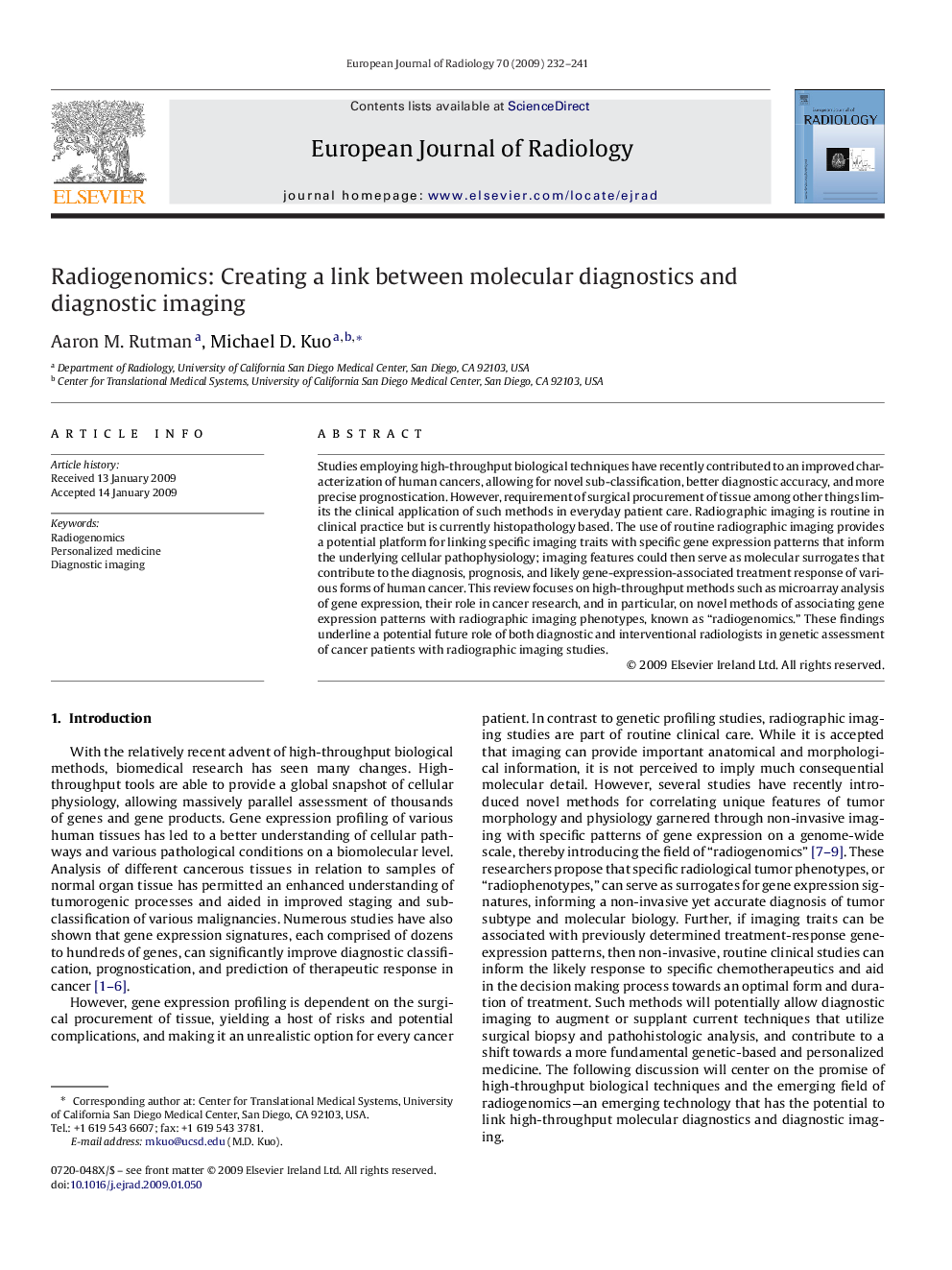| Article ID | Journal | Published Year | Pages | File Type |
|---|---|---|---|---|
| 4227619 | European Journal of Radiology | 2009 | 10 Pages |
Studies employing high-throughput biological techniques have recently contributed to an improved characterization of human cancers, allowing for novel sub-classification, better diagnostic accuracy, and more precise prognostication. However, requirement of surgical procurement of tissue among other things limits the clinical application of such methods in everyday patient care. Radiographic imaging is routine in clinical practice but is currently histopathology based. The use of routine radiographic imaging provides a potential platform for linking specific imaging traits with specific gene expression patterns that inform the underlying cellular pathophysiology; imaging features could then serve as molecular surrogates that contribute to the diagnosis, prognosis, and likely gene-expression-associated treatment response of various forms of human cancer. This review focuses on high-throughput methods such as microarray analysis of gene expression, their role in cancer research, and in particular, on novel methods of associating gene expression patterns with radiographic imaging phenotypes, known as “radiogenomics.” These findings underline a potential future role of both diagnostic and interventional radiologists in genetic assessment of cancer patients with radiographic imaging studies.
